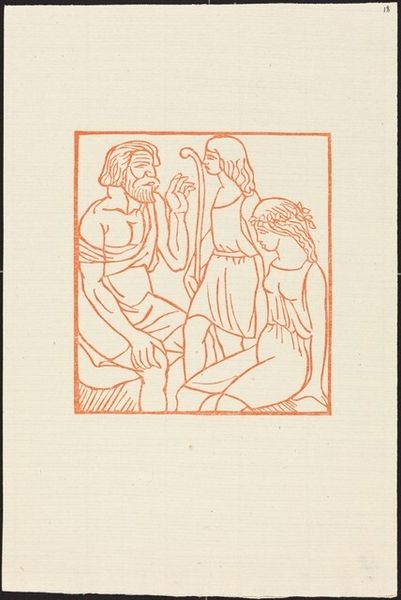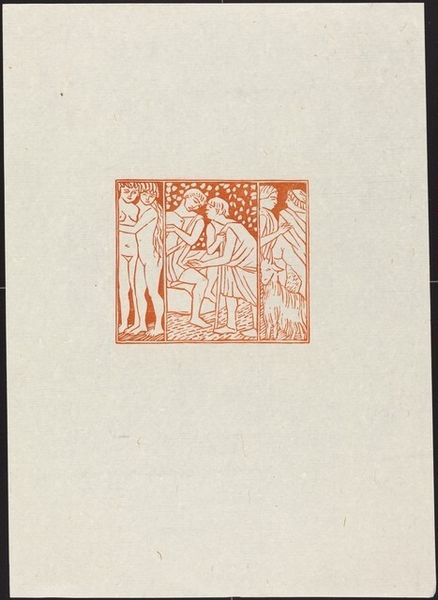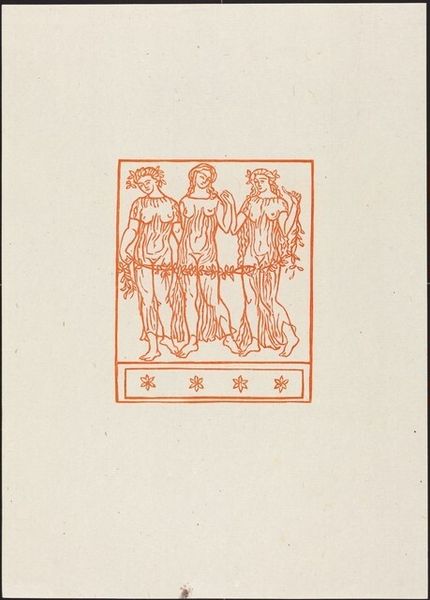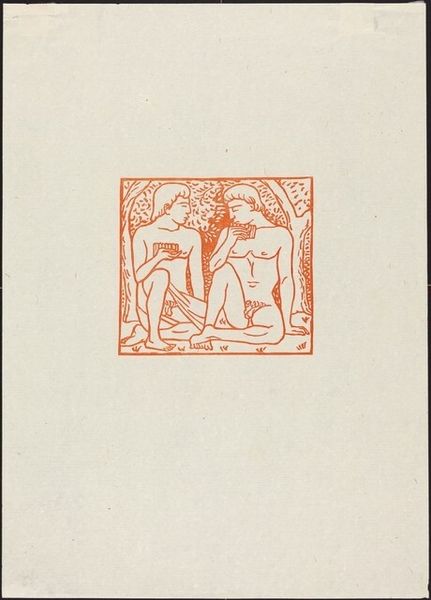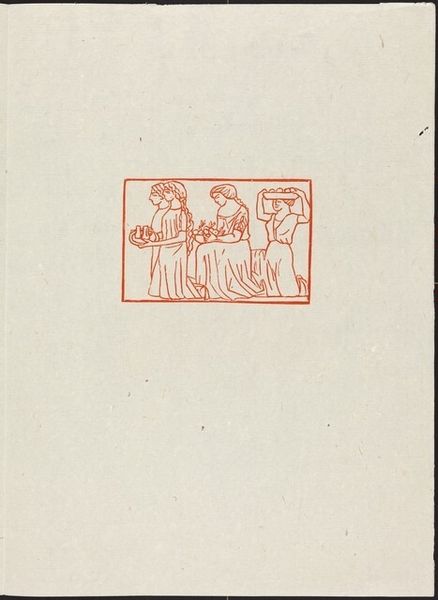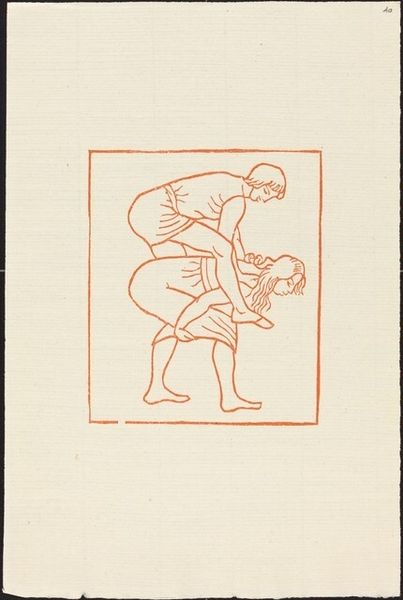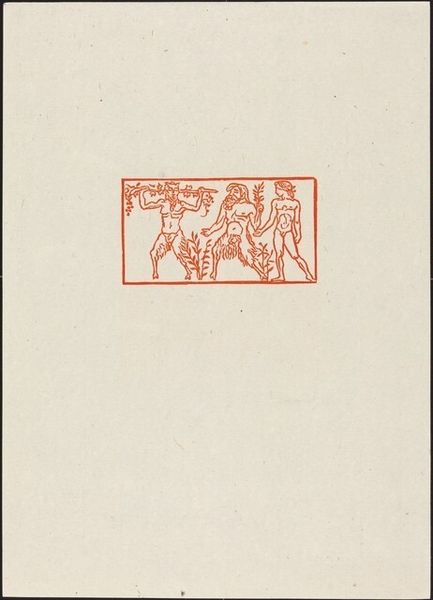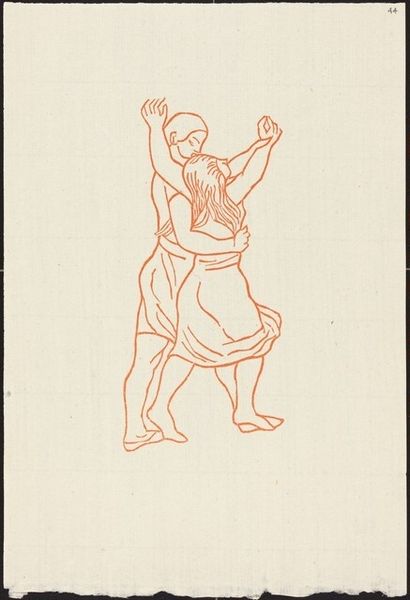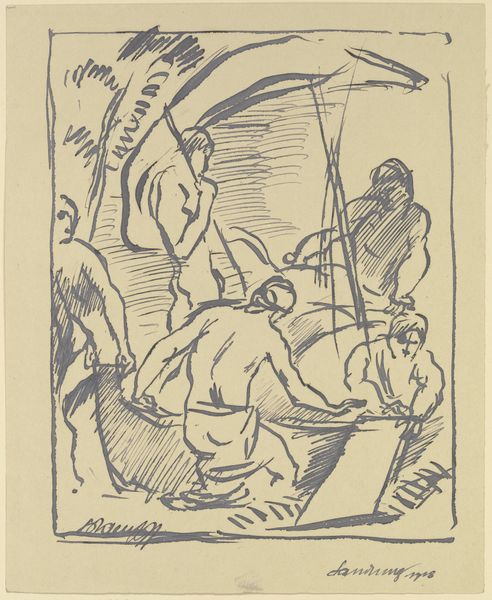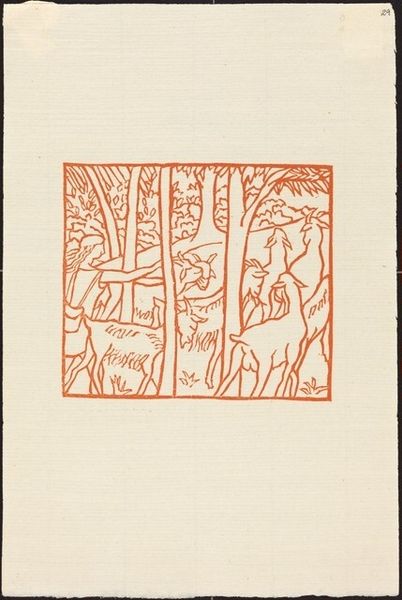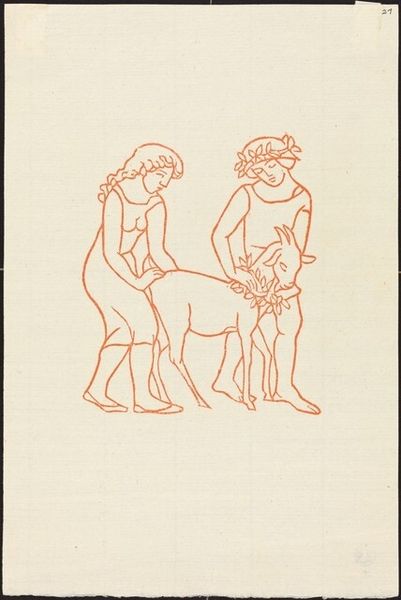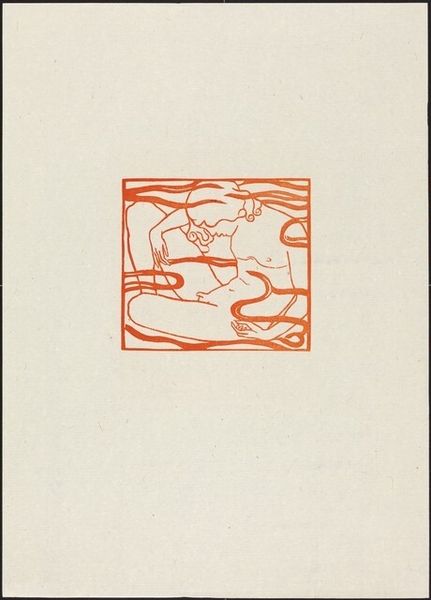
Third Book: Daphnis and Chloe in Dryas' House (Daphnis et Chloe dans la maison de Dryas) Possibly 1937
drawing, print, linocut, ink, woodcut
drawing
narrative-art
pen drawing
linocut
figuration
ink
linocut print
woodcut
genre-painting
Copyright: National Gallery of Art: CC0 1.0
Editor: Here we have Aristide Maillol's "Third Book: Daphnis and Chloe in Dryas' House," potentially from 1937, a linocut print in ink. It strikes me as very…staged, almost like a theatrical tableau. What do you see in this piece? Curator: I see a carefully constructed representation of pastoral innocence, ripe for deconstruction. The story of Daphnis and Chloe is, on its surface, about youthful love. However, Maillol's linocut invites us to consider the power dynamics at play. Who gets to define innocence, and for what purpose? Editor: Power dynamics? In this sweet little scene? Curator: Consider the male gaze inherent in the original Longus story, and how Maillol, even while seemingly celebrating the idyllic, perhaps unwittingly perpetuates it. The unclothed female figure, positioned centrally, becomes an object of visual consumption, doesn't she? Editor: I suppose I hadn’t thought of it that way. I was focused on the simplicity of the lines. Curator: And that simplicity is deceptive. What social and cultural narratives are being simplified, perhaps even erased, to maintain this facade of bucolic harmony? It is from such cultural stories that issues like exploitation or idealized gender roles emerge. Maillol invites you to engage critically with themes of love, youth, and gendered representation, what do you see reflected? Editor: That's... a lot to unpack. I guess I was just enjoying the aesthetic. But you're right, it is important to consider what the artist, and even I, might be overlooking. Curator: Precisely. This image is only seemingly 'sweet'. Editor: Well, I'll definitely look at Maillol differently now! It shows how art can be much more complicated than it first appears.
Comments
No comments
Be the first to comment and join the conversation on the ultimate creative platform.
